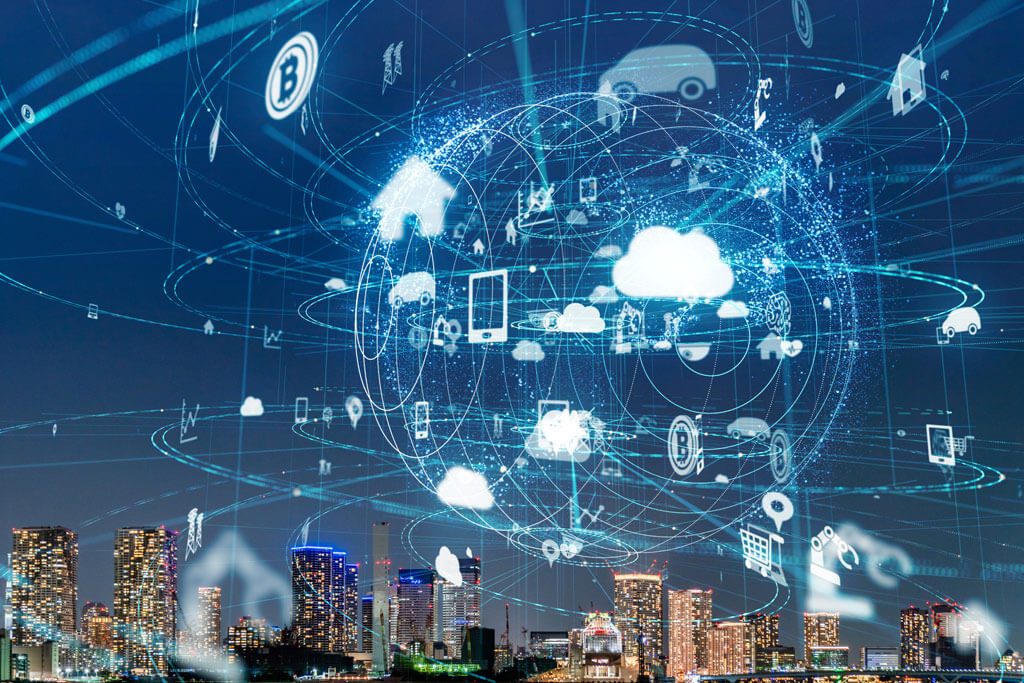The Internet of Things (IoT) is a network of physical objects that are embedded with sensors, software, and network connectivity to enable them to collect and exchange data. IoT devices are becoming increasingly common in a variety of sectors, including smart homes, wearables, industrial IoT, and logistics and transportation.
In these sectors, IoT devices can enhance efficiency and convenience in a number of ways. For example, IoT devices can be used to:
- Monitor energy usage and adjust appliances accordingly, which can help save energy and money.
- Automate tasks, such as turning lights on and off, locking doors, and adjusting blinds. This can save time and hassle, and it can also help improve security.
- Monitor for safety hazards, such as carbon monoxide leaks or flooding. This can help to prevent accidents and injuries.
- Track fitness data, such as steps taken, calories burned, and heart rate. This information can be used to improve health and fitness goals.
- Control smart home devices, such as lights and thermostats. This can be done with voice commands or by using a smartphone app.
- Track locations and send alerts in case of an emergency. This can help keep you safe if you are lost or injured.
- Monitor and control industrial equipment, which can help to improve efficiency and productivity.
- Monitor for safety hazards, such as leaks or spills. This can help to prevent accidents and injuries.
- Monitor the quality of products, such as the weight or the temperature. This can help to ensure that products meet specifications.
- Track the movement of goods and vehicles, which can help to optimize routes, improve delivery times, and reduce costs.
- Monitor for safety hazards, such as traffic accidents or cargo theft. This can help to prevent accidents and losses.
- Provide real-time updates to customers, such as the estimated arrival time of a package. This can help to improve customer satisfaction.
- As IoT devices continue to develop, we can expect to see even more innovative and exciting ways to use them to enhance efficiency and convenience in a variety of sectors.
Here are some additional benefits of using IoT devices:
Improved decision-making: IoT devices can provide businesses with real-time data that can be used to make better decisions. For example, a manufacturing company can use IoT devices to monitor the performance of its machines and identify potential problems before they cause downtime.
Increased productivity: IoT devices can automate tasks and free up employees to focus on more strategic work. For example, a warehouse can use IoT devices to track the location of goods and optimize the picking and packing process.
Enhanced customer service: IoT devices can provide customers with a more personalized and engaging experience. For example, a retailer can use IoT devices to track the shopping habits of its customers and recommend products that they are likely to be interested in.
The future of IoT: The IoT is still in its early stages, but it has the potential to revolutionize a wide range of industries. As the technology continues to develop, we can expect to see even more innovative and exciting ways to use IoT devices to improve our lives.
Here are some of the challenges of using IoT devices:
- Security:
IoT devices are often connected to the internet, which makes them vulnerable to cyberattacks. - Privacy:
IoT devices collect a lot of data about us, which raises privacy concerns. - Cost:
IoT devices can be expensive, which can make them out of reach for some businesses and consumers.
Despite these challenges, the IoT has the potential to be a powerful force for good. By using IoT devices wisely, we can make our lives more efficient, convenient, and secure.









